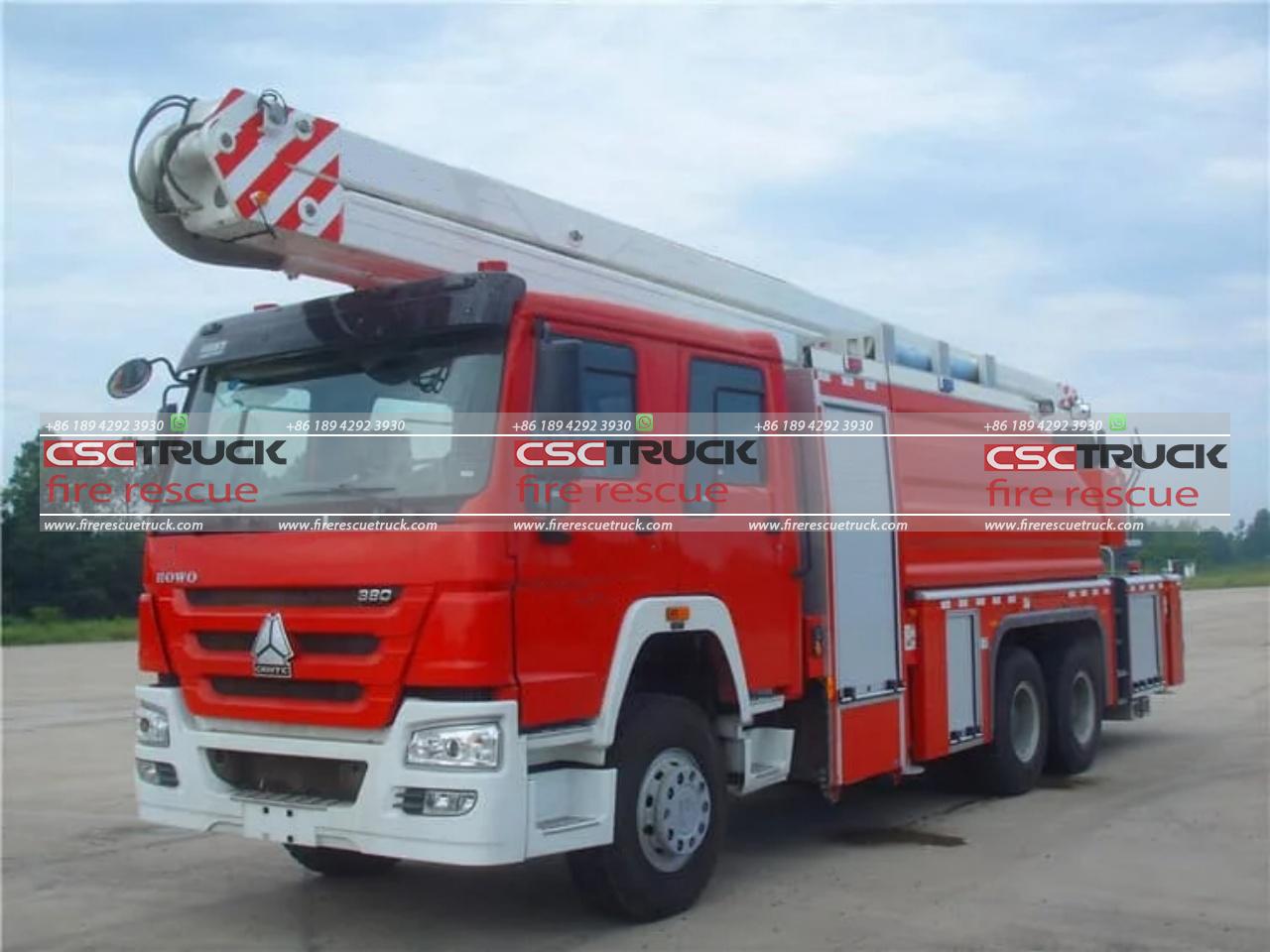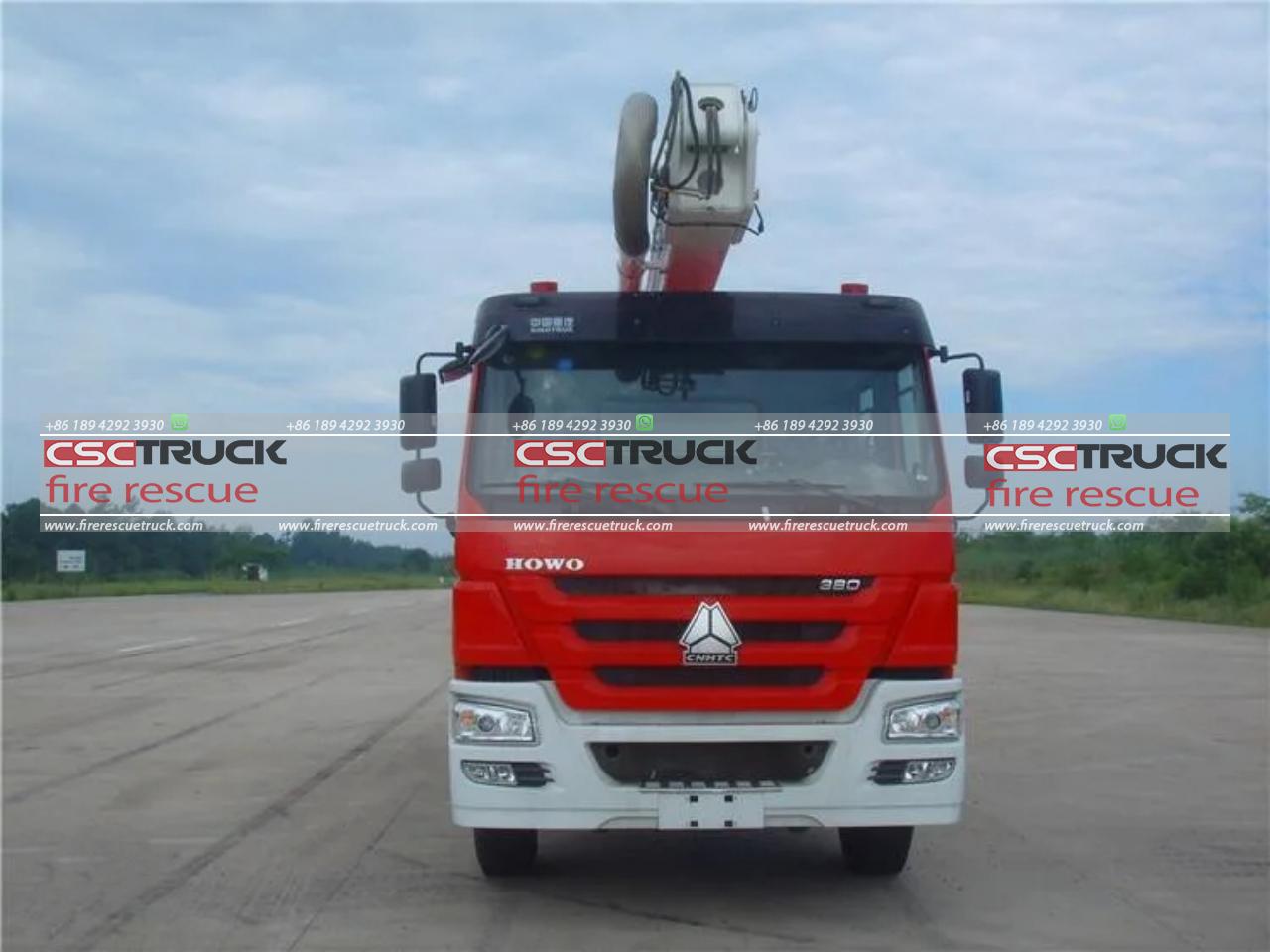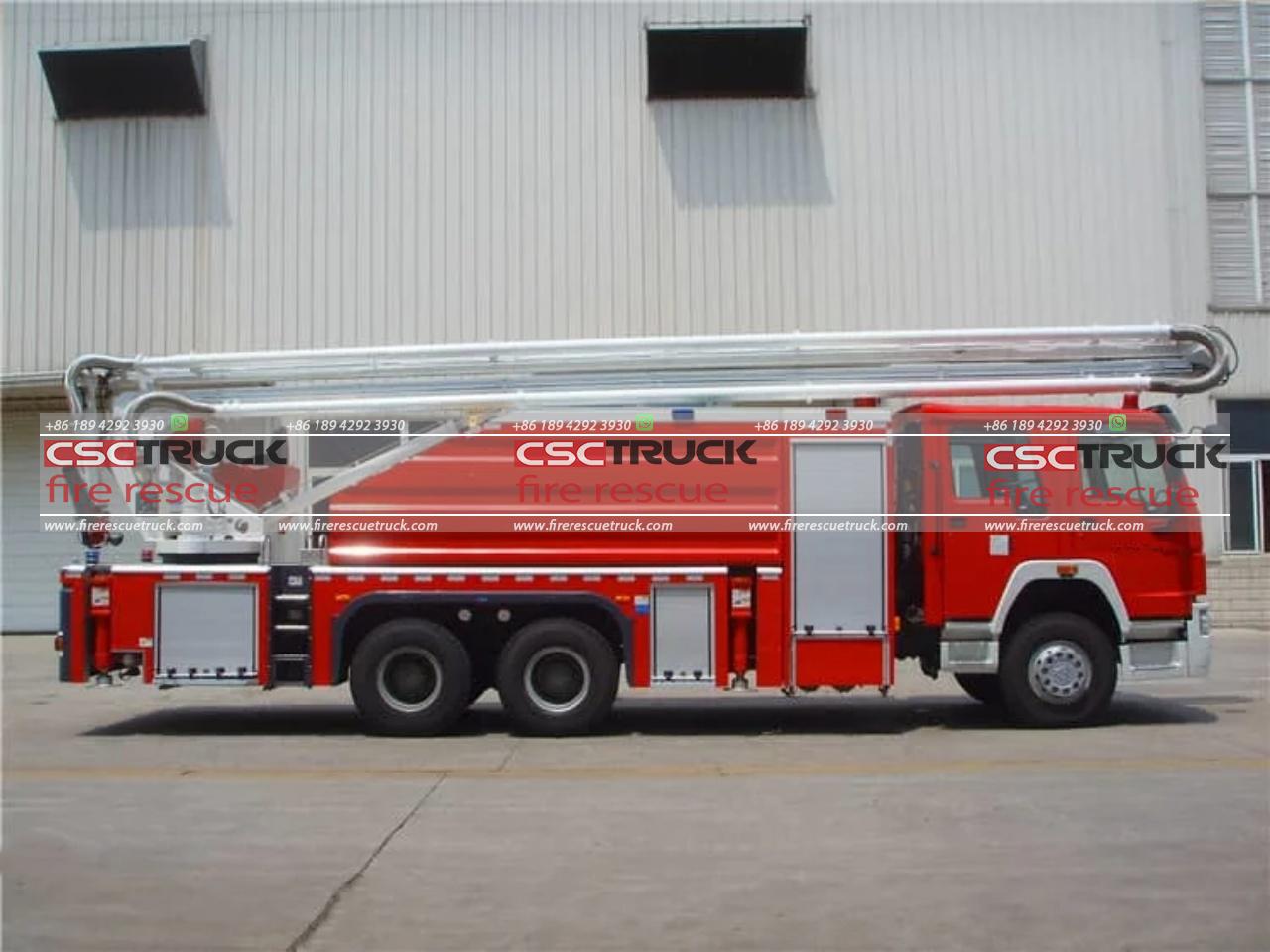Foam Tower Fire Truck: High-Reach Foam Tower Fire Trucks for Elevated Firefighting
Firefighting has always been a challenging and hazardous profession. The complexity of modern urban environments and industrial sites has necessitated the evolution of firefighting equipment to meet these challenges. One of the most remarkable innovations in this field is the high-reach foam tower fire truck, specifically designed for elevated firefighting. This article delves into the features, applications, and advantages of these specialized fire trucks.
The Need for High-Reach Foam Tower Fire Trucks
High-rise buildings, industrial plants, and expansive commercial complexes present unique firefighting challenges. Traditional fire trucks and hoses often lack the reach and the capacity to combat fires effectively in these settings. High-reach foam tower fire trucks are engineered to address these issues, providing firefighters with the tools they need to tackle fires at significant heights and in difficult-to-reach areas.
Foam tower fire trucks are equipped with extendable towers or booms that can reach heights of over 100 feet. These towers are fitted with nozzles that can discharge foam, water, or a combination of both, depending on the nature of the fire. The ability to apply foam is particularly crucial in combating flammable liquid fires, which are common in industrial settings.

Key Features of High-Reach Foam Tower Fire Trucks
1. Extendable Foam Towers: The defining feature of these fire trucks is their extendable towers, which provide the height and flexibility needed to reach elevated fire sources. These towers can be operated with precision, allowing firefighters to direct foam or water streams exactly where needed.
2. Advanced Pump Systems: These trucks are equipped with powerful pumps that can deliver large volumes of foam or water at high pressure. This ensures that the firefighting agents can be effectively applied over large areas and at great heights.
3. Foam Proportioning Systems: Accurate foam proportioning is critical for effective firefighting. High-reach foam tower fire trucks use advanced proportioning systems to mix foam concentrate with water in the correct ratio, ensuring optimal performance.
4. Stabilization Systems: Given the height at which these trucks operate, stability is a major concern. High-reach foam tower fire trucks are equipped with advanced stabilization systems, such as outriggers, to ensure they remain steady during operation.
5. Remote Control Operation: Many modern foam tower fire trucks feature remote control systems that allow operators to control the tower and nozzles from a safe distance. This enhances the safety of the firefighting crew and improves operational efficiency.
6. Integrated Communication Systems: Effective firefighting requires seamless communication among team members. High-reach foam tower fire trucks are often equipped with integrated communication systems to ensure coordination and safety.
Applications of High-Reach Foam Tower Fire Trucks
1. Urban High-Rise Buildings: In urban areas, where skyscrapers and tall residential buildings are common, the risk of fire at elevated levels is significant. High-reach foam tower fire trucks can reach upper floors, providing an essential resource quickly and efficiently for urban firefighting.
2. Industrial Facilities: Factories, refineries, and chemical plants often involve the storage and handling of flammable liquids and gases. Fires in these settings can escalate rapidly and are difficult to control with conventional methods. The foam capabilities of these trucks make them indispensable for industrial firefighting.
3. Large Commercial Complexes: Shopping malls, airports, and other large commercial complexes often have vast areas and multiple floors. High-reach foam tower fire trucks can navigate these environments and deliver firefighting agents precisely where needed.
4. Specialized Scenarios: Certain scenarios, such as fires in large storage tanks or on board ships docked at ports, require the unique capabilities of high-reach foam tower fire trucks. Their ability to project foam over large distances and heights makes them ideal for these specialized firefighting operations.

Advantages of High-Reach Foam Tower Fire Trucks
1. Enhanced Reach and Coverage: The primary advantage of these fire trucks is their ability to reach high and distant fire sources that are beyond the capabilities of traditional firefighting equipment. This is particularly crucial in densely built urban environments and sprawling industrial sites.
2. Versatile Firefighting Capabilities: The ability to apply both foam and water allows these trucks to tackle a wide range of fire types, including flammable liquid fires and standard structural fires. This versatility is a significant benefit in diverse firefighting scenarios.
3. Improved Safety for Firefighters: By enabling remote control operation and providing stable platforms for elevated firefighting, high-reach foam tower fire trucks enhance the safety of firefighters. They can operate from a safer distance, reducing the risk of injury.
4. Efficient Resource Utilization: These trucks are designed to deliver firefighting agents efficiently, ensuring that foam and water are effectively used without unnecessary waste. This efficiency is crucial in large-scale firefighting operations where resources may be limited.
5. Rapid Deployment and Operation: High-reach foam tower fire trucks are engineered for quick setup and operation. Their advanced systems and controls allow firefighters to respond swiftly to emergencies, which is essential for minimizing damage and saving lives.
Conclusion
High-reach foam tower fire trucks represent a significant advancement in firefighting technology. Their ability to reach elevated fire sources, combined with their versatile foam and water capabilities, makes them indispensable tools for modern firefighting. As urban landscapes grow taller and industrial sites become more complex, the importance of these specialized fire trucks will only increase.
Investing in high-reach foam tower fire trucks is not just about enhancing firefighting capabilities; it is about ensuring the safety of communities and the firefighters who protect them. These advanced vehicles are a testament to the ongoing innovation in firefighting technology, designed to meet the evolving challenges of the 21st century.








